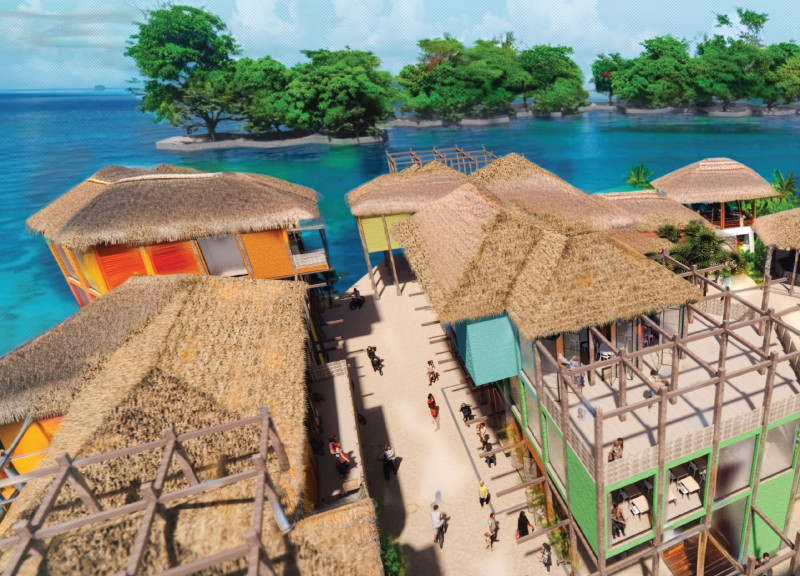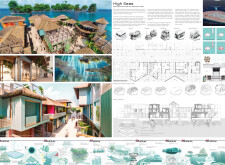5 key facts about this project
## Overview
The High Seas initiative proposes a blueprint for floating communities designed to address the challenges of rising sea levels. Situated in vulnerable coastal regions, this project combines functional design with ecological considerations, creating an innovative living environment that aligns with aquatic contexts. It draws inspiration from traditional fishing villages, merging cultural practices with contemporary architectural needs to foster resilient, adaptable habitats.
### Spatial Strategy
Central to the design is a clustered layout that reinterprets traditional village structures. The community features mixed-use areas that integrate residential, commercial, and educational functions, promoting a multifunctional living experience. Pedestrian-friendly pathways connect various components, enhancing accessibility and encouraging physical activity. Open spaces, including green areas and water features, facilitate environmental interaction and support local biodiversity, allowing residents to engage meaningfully with their surroundings.
### Material Selection
The project emphasizes a careful selection of materials to ensure durability, sustainability, and aesthetic appeal. Key materials include reinforced concrete for structural stability, lightweight aluminum for adaptability, and natural bamboo for roofing, reflecting sustainable construction practices. Glass panels enhance natural light within living spaces, contributing to energy efficiency, while biodegradable plastics and wooden finishes are employed for interiors, emphasizing a connection to traditional craftsmanship and environmental stewardship.



















































